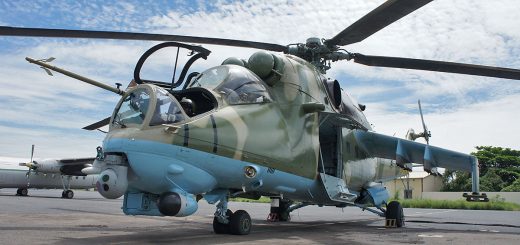US Bell AH-1 Cobra strikes in the Middle East
The United States has approved the potential sale to Bahrain of 12 Bell AH-1Z Viper attack helicopters at an estimated cost of $911.4 million, including spares, support, weapons and training. Jon Lake reports.
The AH-1Z Viper is the latest in a long line of Cobra variants and was the result of an H-1 helicopter upgrade programme for the US Marine Corps, launched in 1996.
It has 85% commonality with the upgraded UH-1Y utility helicopter.
The US Marine Corps ordered 189 AH-1Zs and deliveries will continue until 2022.
The Royal Bahraini Air Force (RBAF) is undertaking a two-step recapitalisation of its attack/intelligence, surveillance, and reconnaissance (ISR) helicopter force, which presently consists of 22 Bell AH-1E/F Cobras, eight AH-1Ps and four surviving Bolkow BO-105 scout helicopters that were first delivered in 1978.
Bahrain commissioned Turkish Aerospace Industries (TAI) and Turkey’s avionic/mission computer manufacturer institute, Aselsan, to upgrade the Cobras, integrating the mission computer and some avionics from Turkey’s T-129 Atak helicopter, and to integrate some Roketsan weapons, including the Cirit 2.75inch rocket.
New attack helicopters will augment the upgraded Cobras and the Bo-105s will be retired under the second phase of the programme.
Initially, it looked likely that Bahrain would select the TAI T129 as its new attack helicopter. However, the kingdom submitted a request for information (RFI) for the Bell AH-1Z Cobra Viper in 2016.
On April 27 2018, the US Defense Security Cooperation Agency (DSCA) announced that the State Department had approved the Bahraini purchase of 12 AH-1Z helicopters.
Bahrain’s selection of the Bell AH-1Z is believed to have been influenced by the effectiveness of the aircraft’s target sight system, which is claimed to provide the longest range and highest accuracy of any helicopter weapons sight. The Viper also features a fully integrated air-to-air missile capability.
The AH-1Z’s marinisation provides useful protection in desert environments and the type provides obvious interoperability benefits with Bahrain’s US ally.
The Bahraini aircraft will be supplied with 26 Thales TopOwl helmet-mounted display systems, 26 T-700 GE 401C engines (24 installed and 2 spares), 12 M197 20mm gun systems, 14 AN/AAQ-30 target sight systems, 15 embedded global positioning/inertial navigation systems (EGIs), 30 tech refresh mission computers, 15 APX-117 identification friend or foe (IFF) systems, 15 AN/AAR-47 missile warning systems, 15 AN/ALE-47 countermeasure dispenser sets, and 15 APR-39C(V)2 radar warning receivers.
The proposed package also includes 12 joint mission planning systems, plus various spares, training and support packages, technical data and publications.
Weapons include Lockheed Martin AGM-114 Hellfire air-to-surface missiles and BAE Systems advance precision kill weapon system (APKWS) II guided rockets.
Not everyone was happy about the proposed attack helicopter sale. The human rights group, Americans for Democracy & Human Rights in Bahrain, called upon the US Congress to block the sale in the wake of the regime’s heavy-handed suppression of political dissidents and pro-democracy campaigners, noting the US State Department’s report of “a widespread human rights crisis in Bahrain”. The group said that the Trump administration was effectively rewarding the Bahraini military for violating international law.
If and when concluded, the Bahraini Cobra deal will mark the second export sale of the AH-1Z Viper, with Pakistan having committed to acquire 12 examples.
At one time, Jordan seemed to be a potential AH-1Z customer, but is instead upgrading 12 older, single-engined AH-1Fs to what has been referred to as an “AH-1Z Lite” gunship configuration.
Northrop Grumman is overseeing the design and integration of the avionics solution, while Science & Engineering Services (SES) is rewiring and reconditioning the aircraft for 20 more years in service.
The upgraded aircraft will feature a new L3 Wescam MX-15D sensor turret in place of the original telescopic sight unit, with electro-optical and infrared cameras, and a laser designator.
The aircraft will incorporate the same Northrop Grumman integrated mission equipment package (iMEP) avionics system as the AH-1Z, incorporating a FlightPro Gen III mission computer, and large flat panel liquid-crystal display (LCD) multifunction displays, as well as new weapons and defensive systems.
The Royal Jordanian Air Force has taken delivery of two of the updated gunships from SES for weapons testing and final acceptance checks.
The programme office has reported interest in the AH-1Z from the UAE, Australia, Brazil, Croatia, the Czech Republic, Japan, Malaysia, Poland and Thailand, as well as Bahrain.
Source: By (Arabian Aerospace) – Posted 26 September 2018


















